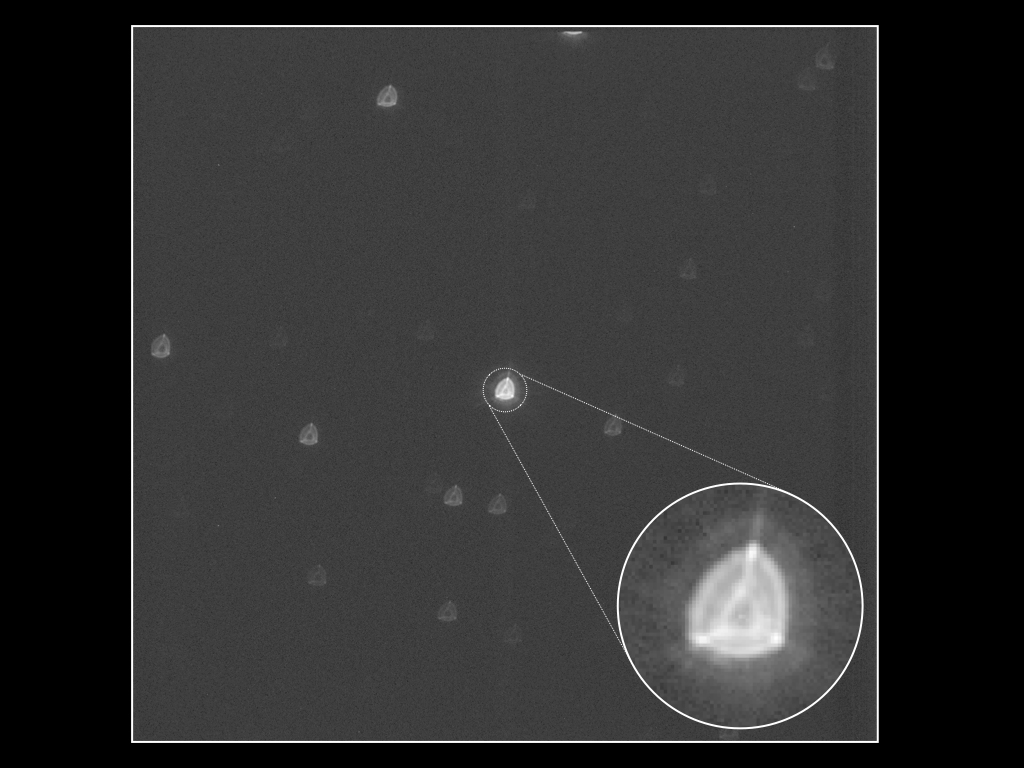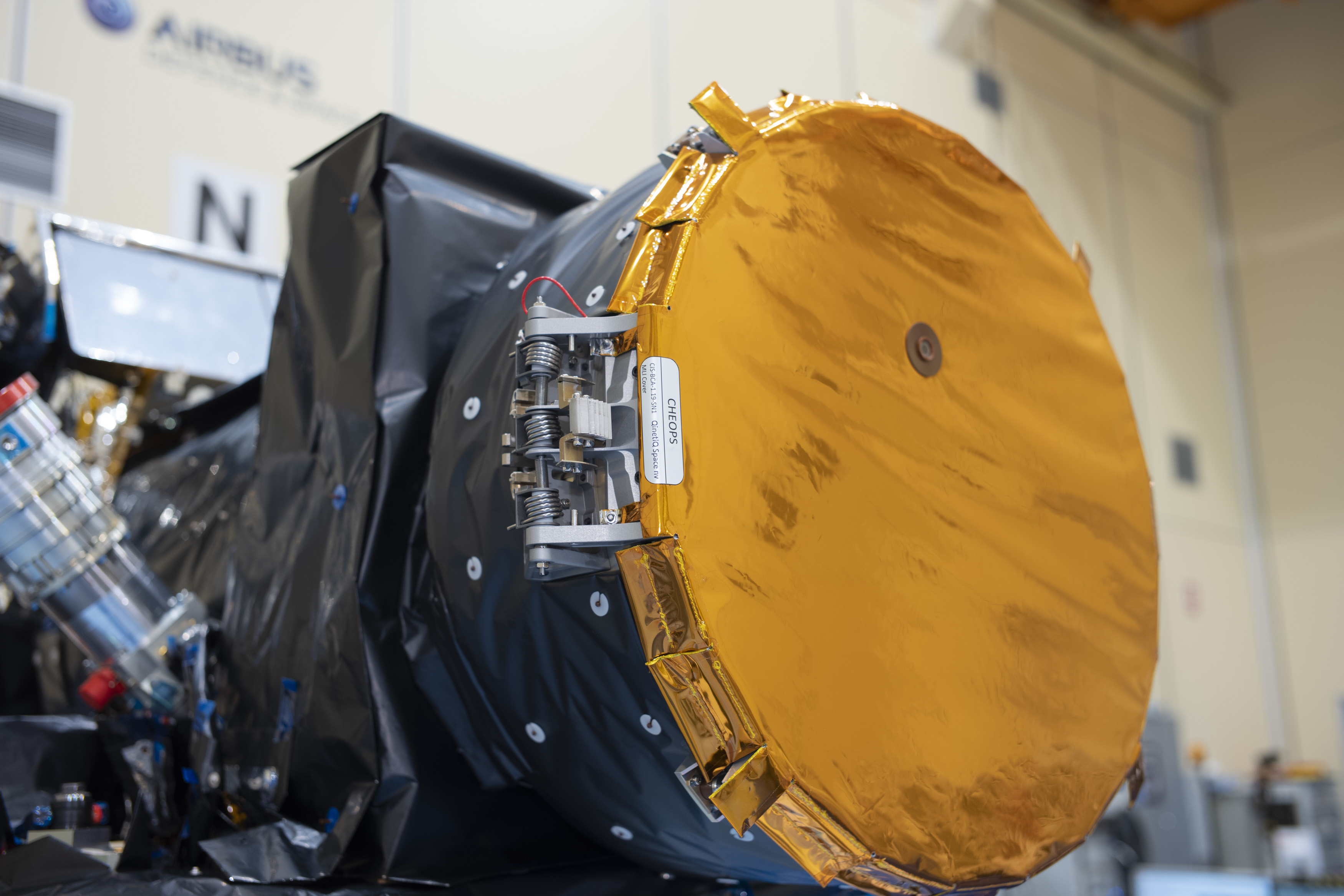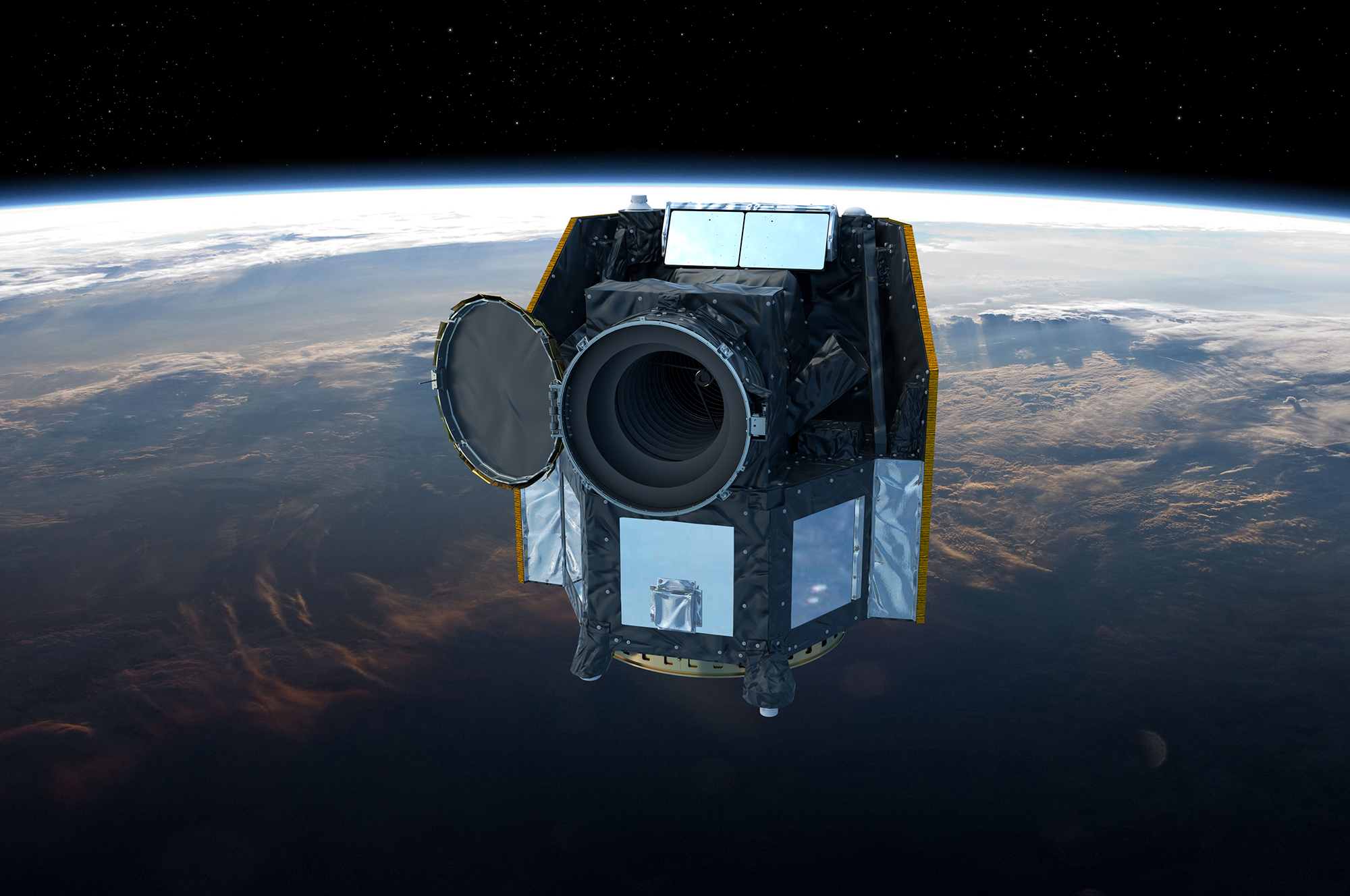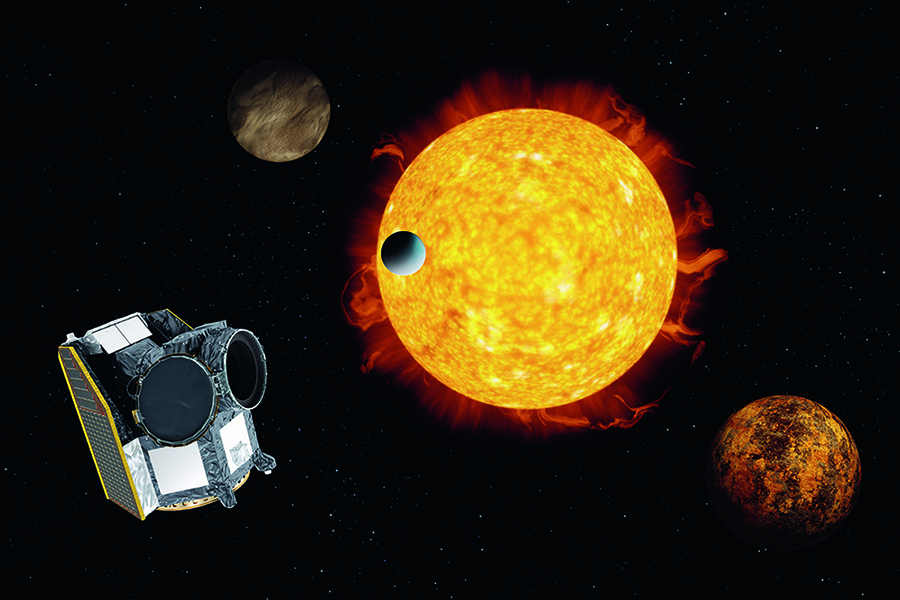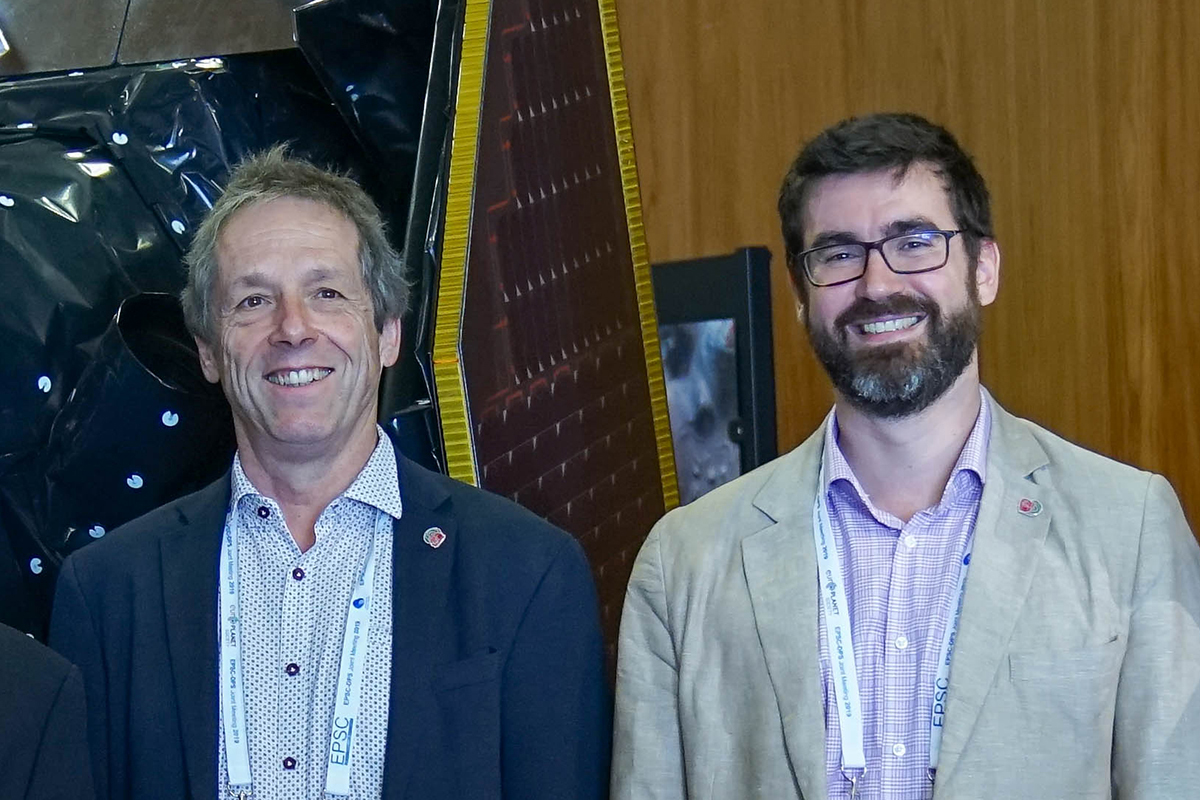CHEOPS space telescope takes its first pictures
Next milestone in the commissioning of CHEOPS: After the successful opening of the space telescope cover on January 29, 2020, CHEOPS has now taken its first images of the sky. CHEOPS is a joint mission of the European Space Agency (ESA) and Switzerland, led by the University of Bern, in collaboration with the University of Geneva.
The tension was high: In front of a large screen at the house near Madrid where members of the Consortium participating in the commissioning of the satellite live, as well as at the other institutes involved in CHEOPS, the team waited for the first images from the space telescope. "The first images that were about to appear on the screen were crucial for us to be able to determine if the telescope's optics had survived the rocket launch in good shape," explains Willy Benz, Professor of Astrophysics at the University of Bern and Principal Investigator of the CHEOPS mission. "When the first images of a field of stars appeared on the screen, it was immediately clear to everyone that we did indeed have a working telescope," says Benz happily. Now the remaining question is how well it is working.
First images even better than expected
Preliminary analysis has shown that the images from CHEOPS are even better than expected. However, better for CHEOPS does not mean sharper as the telescope has been deliberately defocused. This is because spreading the light over many pixels ensures that the spacecraft’s jitter and the pixel-to-pixel variations are smoothed out, allowing for better photometric precision. "The good news is that the actual blurred images received are smoother and more symmetrical than what we expected from measurements performed in the laboratory," says Benz. High precision is necessary for CHEOPS to observe small changes in the brightness of stars outside our solar system caused by the transit of an exoplanet in front of the star. Since these changes in brightness are proportional to the surface of the transit planet, CHEOPS will be able to measure the size of the planets. "These initial promising analyses are a great relief and also a boost for the team," continues Benz.
Further functional tests to follow
How well CHEOPS is working will be tested further over the next two months. "We will analyze many more images in detail to determine the exact level of accuracy that can be achieved by CHEOPS in the different aspects of the science program," says David Ehrenreich, CHEOPS project scientist at the University of Geneva. "The results so far bode well," said Ehrenreich.
CHEOPS – in search of potential habitable planetsThe CHEOPS mission is the first of the ESA’s newly created "S-class missions" (small class missions with an Agency budget under 50 million) and is dedicated to characterizing exoplanets’ transits. "CHEOPS" (CHaracterising ExOPlanet Satellite) will make highly accurate measurements of stars and monitor small changes in their brightness that are caused by a planet transiting in front of the star. CHEOPS was developed as part of a partnership between the European Space Agency (ESA) and Switzerland. Under the leadership of the University of Bern and ESA, a consortium of more than a hundred scientists and engineers from eleven European states was involved in constructing the satellite over five years. CHEOPS began its journey into space on Wednesday, December 18, 2019 on board a Soyuz Fregat rocket from the European spaceport in Kourou, French Guiana. Since then, it has been orbiting the Earth on a polar orbit in roughly an hour and a half at an altitude of 700 kilometers following the terminator. The Swiss Confederation participates in the CHEOPS telescope within the PRODEX programme (PROgramme de Développement d'EXpériences scientifiques) of the European Space Agency ESA. Through this programme, national contributions for science missions can be developed and built by project teams from research and industry. This transfer of knowledge and technology between science and industry ultimately also gives Switzerland a structural competitive advantage as a business location – and enables technologies, processes and products to flow into other markets and thus generate added value for our economy. More information: https://cheops.unibe.ch/ |
Bernese space exploration: With the world’s elite since the first moon landingWhen the second man, "Buzz" Aldrin, stepped out of the lunar module on July 21, 1969, the first task he did was to set up the Bernese Solar Wind Composition experiment (SWC) also known as the “solar sail” by planting it in the ground of the moon, even before the American flag. This experiment, which was planned and the results analysed by Prof. Dr. Johannes Geiss and his team from the Physics Institute of the University of Bern, was the first great highlight in the history of Bernese space exploration Ever since Bernese space exploration has been among the world’s elite. The numbers are impressive: 25 times were instruments flown into the upper atmosphere and ionosphere using rockets (1967-1993), 9 times into the stratosphere with balloon flights (1991-2008), over 30 instruments were flown on space probes, and with CHEOPS the University of Bern shares responsibility with ESA for a whole mission. The successful work of the Department of Space Research and Planetary Sciences (WP) from the Physics Institute of the University of Bern was consolidated by the foundation of a university competence center, the Center for Space and Habitability (CSH). The Swiss National Fund also awarded the University of Bern the National Center of Competence in Research (NCCR) PlanetS, which it manages together with the University of Geneva. |
Exoplanet research in Geneva: 24 years of expertise awarded a Nobel PrizeCHEOPS will provide crucial information on the size, shape, formation and evolution of known exoplanets. The installation of the "Science Operation Center" of the CHEOPS mission in Geneva, under the supervision of two professors from the UniGE Astronomy Department, is a logical continuation of the history of research in the field of exoplanets, since it is here that the first was discovered in 1995 by Michel Mayor and Didier Queloz, winners of the 2019 Nobel Prize in Physics. This discovery has enabled the Astronomy Department of the University of Geneva to be at the forefront of research in the field, with the construction and installation of HARPS on the ESO's 3.6m telescope at La Silla in 2003, a spectrograph that remained the most efficient in the world for two decades to determine the mass of exoplanets. However, this year HARPS was surpassed by ESPRESSO, another spectrograph built in Geneva and installed on the VLT in Paranal. CHEOPS is therefore the result of two national expertises, on the one hand the space know-how of the University of Bern with the collaboration of its Geneva counterpart and on the other hand the ground experience of the University of Geneva supported by its colleague in the Swiss capital. Two scientific and technical competences that have also made it possible to create the National Center of Competence in Research (NCCR) PlanetS. |
2020/02/07

